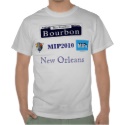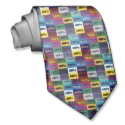|
|
Reference type: Journal
Authors: Hiratani H, Alvarez-Lorenzo C
Article Title: Timolol uptake and release by imprinted soft contact lenses made of N,N-diethylacrylamide and methacrylic acid.
Publication date: 2002
Journal: Journal of Controlled Release
Volume: 83
Issue: (2)
Page numbers: 223-230.
DOI: 10.1016/S0168-3659(02)00213-4
Abstract: The aim of this work was to evaluate the utility of molecular imprinting for improving the loading capability of weakly cross-linked hydrogels, with a view to their use as soft contact lenses for administration of timolol. Imprinted hydrogels were prepared considering preformation of complexes between methacrylic acid (functional monomers) and timolol (target molecules), and polymerization with N,N- diethylacrylamide and ethylenglycol dimethacrylate (EGDMA, cross-linker) after injection in moulds (0.3 mm thickness) and UV irradiation at room temperature. After polymerization, timolol molecules were removed by washing. When the gels were immersed in timolol solutions, the imprinted gets adsorbed much more timolol than the corresponding non-imprinted ones, especially above 60 mM EGDMA. The minimum cross-linker concentration for the imprinting to be effective was 80 mM EGDMA. The imprinted contact lenses improved significantly the affinity of the hydrogels for timolol, estimated after fitting Langmuir equation to the adsorption isotherms. These results indicated that adsorption sites capable of capturing the target molecules were encoded effectively into the polymer network by the molecular imprinting technique and, in consequence, improved the drug loading capacity of the gels. Loaded imprinted contact lenses were able to prolong timolol release, in 0.9% NaCl aqueous solution, for more than 24 h. (C) 2002 Elsevier Science B.V. All rights reserved
|


 MIP Workshop WorldTour shirt
MIP Workshop WorldTour shirt







 multi MIPs logo mug
multi MIPs logo mug







 multi_mips_logo_tie
multi_mips_logo_tie






